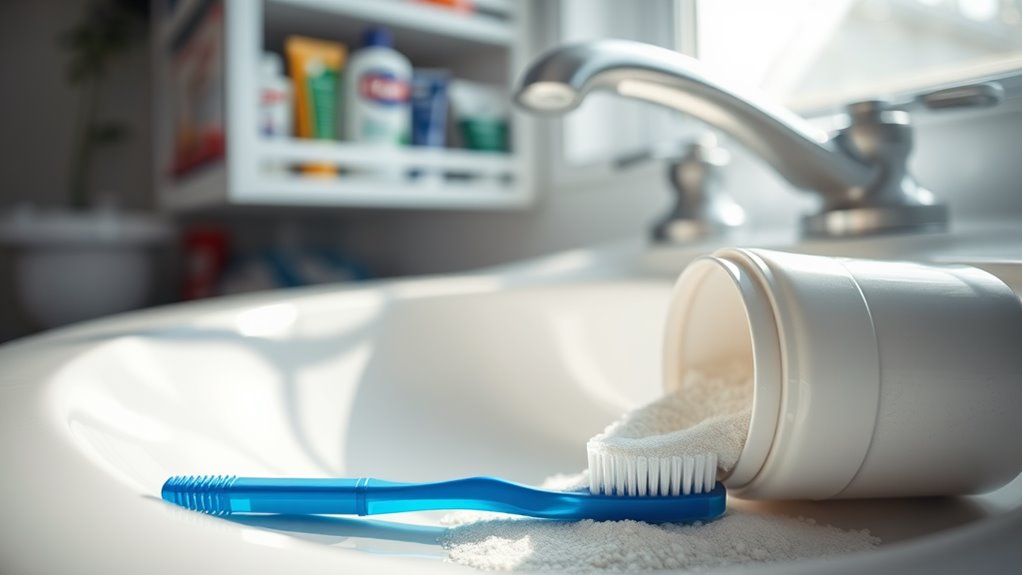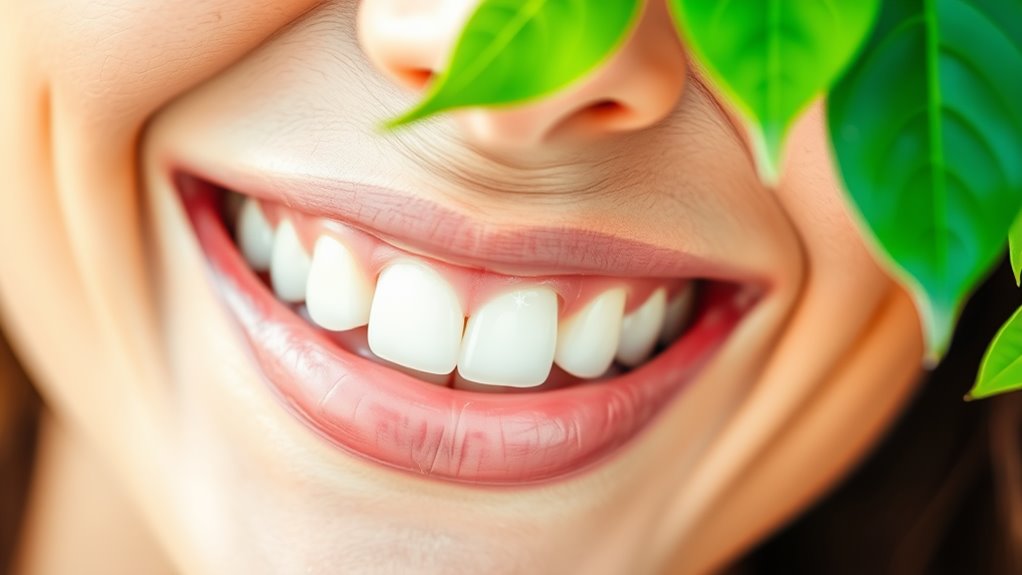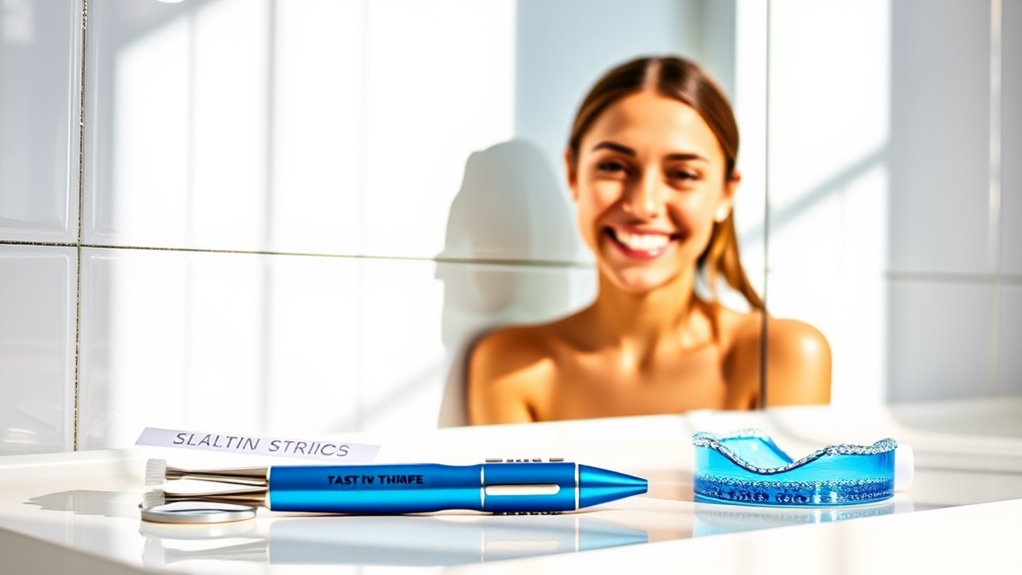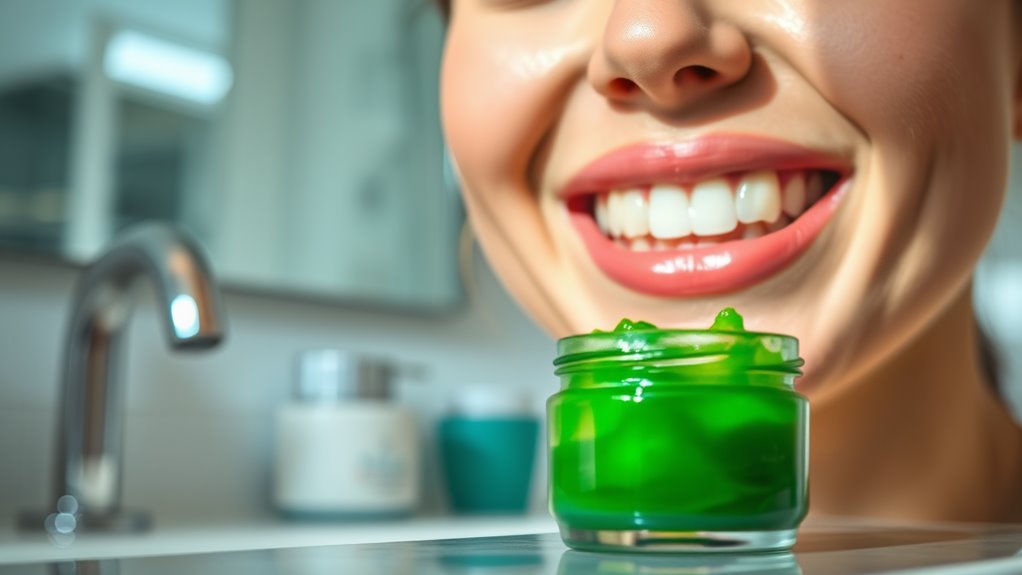Whiten Your Teeth Instantly With This Kitchen Ingredient!
You’ve probably noticed those pricey teeth whitening products at the drugstore, but what if you could achieve similar results with something from your kitchen cabinet? Baking soda, a humble household staple, holds remarkable whitening power that can transform your smile. While professional treatments can cost hundreds, this natural alternative offers a budget-friendly solution that’s both effective and gentle. Let’s explore how this simple ingredient can give you the bright smile you’re after.
The Magic of Baking Soda for Teeth Whitening
Known for its natural whitening properties, baking soda has become a popular DIY teeth whitening solution. This common kitchen ingredient works by creating a mild abrasive action that helps remove surface stains from your teeth.
When you’re looking for instant teeth whitening results, baking soda can deliver noticeable improvements after just one use.
To harness baking soda’s whitening power, mix it with a small amount of water to form a paste. Apply this mixture to your toothbrush and gently brush your teeth for two minutes.
The alkaline nature of baking soda helps neutralize acids that cause tooth discoloration, while its fine particles lift away coffee, tea, and wine stains. However, frequent use of baking soda can lead to enamel erosion, which poses a risk to your dental health.
For enhanced results, you can combine baking soda with hydrogen peroxide or fresh lemon juice. However, use this method no more than twice per week to protect your tooth enamel from excessive abrasion.
Step-by-Step Application Method
While baking soda offers a simple teeth whitening solution, achieving the best results requires a proper application technique.
Start by mixing 1/4 teaspoon of baking soda with just enough water to form a smooth paste. Don’t make it too runny – you’re aiming for a toothpaste-like consistency.
Wet your toothbrush and dip it into the mixture. Apply the paste to your teeth using gentle circular motions, making sure you cover all visible surfaces. Don’t brush too hard, as baking soda can be abrasive.
Let the paste sit on your teeth for one minute, but don’t exceed two minutes to protect your enamel. Rinse thoroughly with lukewarm water, making sure to remove all residue.
For optimal results, use this method no more than twice per week. You’ll notice gradual whitening after a few applications, and you can maintain results by alternating between this technique and your regular toothpaste. Additionally, remember that using moderation is essential to protect enamel and maintain dental health.
What to Expect and Timeline for Results
Although results vary from person to person, you’ll typically notice a subtle improvement in tooth color after 2-3 applications of the baking soda treatment. For optimal results, continue the treatment twice weekly for 2-4 weeks. You’ll see the most dramatic whitening effects during this initial month of consistent use.
While some users report immediate brightness after the first application, lasting changes require patience and dedication to the process. The baking soda gradually removes surface stains from coffee, tea, and wine without damaging your enamel. Incorporating calcium-rich foods into your diet can further support strong teeth and enhance your whitening efforts.
You’ll achieve the best outcome by combining this natural whitening method with good oral hygiene habits. Track your progress by taking weekly photos in natural lighting. If you experience any tooth sensitivity, reduce application frequency to once weekly.
Most users achieve their desired shade within 6-8 weeks, though maintenance treatments may be needed every few months to preserve results.
Safety Tips and Important Precautions
Before starting any teeth whitening treatment, you’ll need to take proper safety precautions to protect your oral health.
First, consult your dentist to ensure you don’t have untreated cavities, gum disease, or sensitive teeth that could worsen with whitening treatments. If you’re pregnant or nursing, wait until after to begin any whitening regimen.
Always perform a patch test on a small area of your teeth to check for adverse reactions.
Don’t leave whitening agents on longer than recommended, as this can damage your enamel or cause painful sensitivity. Keep whitening materials away from your gums, as they can become irritated or burned.
If you experience any sharp pain, persistent sensitivity, or gum inflammation, stop treatment immediately and seek professional advice.
Consider using desensitizing toothpaste before and after treatments, and never mix different whitening products together, as this can create harmful chemical reactions. Additionally, consulting a dentist ensures a personalized and safe whitening plan, which helps to avoid common mistakes that can lead to sensitivity and uneven results.




